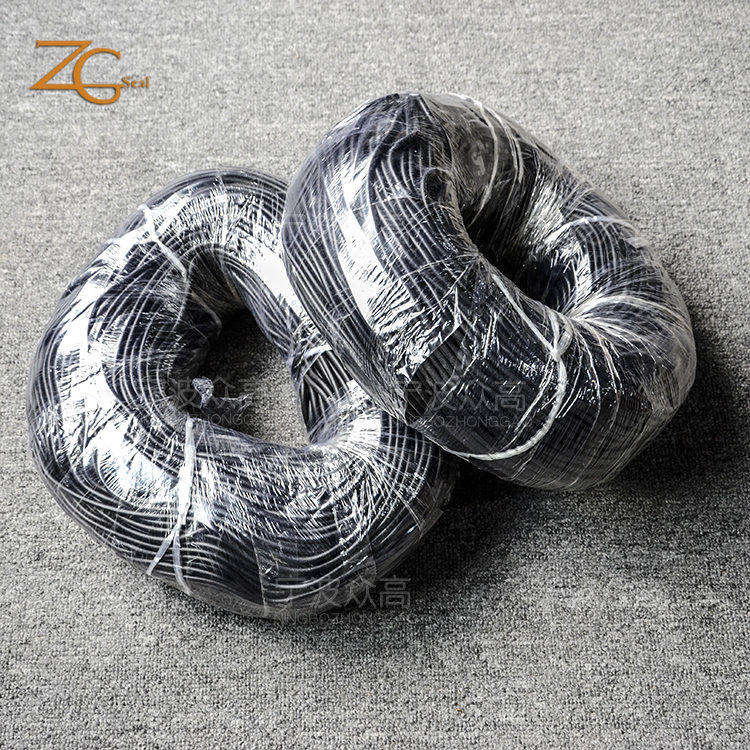A rubber cord is a solid or hollow, elongated piece of rubber, typically round or square in cross-section. These cords are manufactured from various rubber compounds, each formulated to offer specific properties like strength, resilience, and resistance to elements like oil, heat, or chemicals.
A Universe of Applications: Where Do Rubber Cords Shine?
The versatility of rubber cords allows them to excel in numerous applications:
Sealing Solutions: One of the most common uses of rubber cords is in creating effective seals. Rubber cord gaskets form a tight barrier between surfaces, preventing leaks of liquids, gases, or dust. We see them sealing outer lid gaskets for tool cases, automotive O-rings in engines, and even sealing rubber rods used in the oil industry.
Protecting Sensitive Components: Rubber cords can be used to cushion and protect delicate components from impact or abrasion. For example, they might be wrapped around high-pressure gauges and meters to absorb shocks and vibrations, ensuring accurate readings.
Plugging the Gaps: Rubber cords offer a simple and effective solution for plugging holes in various applications. Extruded rubber fenders might utilize rubber cords to plug unwanted gaps, while jewellery makers can employ them for temporary hole filling during the crafting process.
Beyond the Obvious: Unexpected Uses for Rubber Cords
The applications of rubber cords extend beyond these common examples:
Industrial Applications: In various industrial settings, rubber cords find use in sealing machinery components, dampening vibrations in equipment, and providing insulation for electrical wires.
Construction Industry: Rubber cords can be used for sealing windows and doors in construction projects, preventing drafts and leaks.
Marine Applications: Boats and other marine vessels rely on rubber cords for sealing hatches, compartments, and other openings to ensure watertight integrity.
Choosing the Right Rubber Cord for the Job:
With such a vast array of applications, selecting the right rubber cord requires considering several factors:
Size and Shape: The size and shape of the cord should correspond to the specific application and the dimensions of the gap or area needing sealing or protection.
Material: Different rubber compounds offer varying degrees of strength, flexibility, and resistance to elements like heat, oil, or chemicals. Choose a material that aligns with the specific demands of the environment.
Durability: Consider the expected wear and tear on the rubber cord. Opt for a more durable compound if the cord will be exposed to harsh conditions or frequent use.
The Enduring Value of Rubber Cords
Rubber cords, despite their simple appearance, are a testament to the power of well-designed materials. Their versatility, functionality, and affordability make them a cornerstone in countless industries and a valuable tool for DIY projects. So, the next time you encounter a sealed container, a protected instrument, or a perfectly plugged hole, take a moment to appreciate the silent hero behind it all – the rubber cord.

 English
English  Español
Español  Português
Português  русский
русский  Français
Français  日本語
日本語  Deutsch
Deutsch  tiếng Việt
tiếng Việt  Italiano
Italiano  Nederlands
Nederlands  ภาษาไทย
ภาษาไทย  Polski
Polski  한국어
한국어  Svenska
Svenska  magyar
magyar  Malay
Malay  বাংলা ভাষার
বাংলা ভাষার  Dansk
Dansk  Suomi
Suomi  हिन्दी
हिन्दी  Pilipino
Pilipino  Türkçe
Türkçe  Gaeilge
Gaeilge  العربية
العربية  Indonesia
Indonesia  Norsk
Norsk  تمل
تمل  český
český  ελληνικά
ελληνικά  український
український  Javanese
Javanese  فارسی
فارسی  தமிழ்
தமிழ்  తెలుగు
తెలుగు  नेपाली
नेपाली  Burmese
Burmese  български
български  ລາວ
ລາວ  Latine
Latine  Қазақша
Қазақша  Euskal
Euskal  Azərbaycan
Azərbaycan  Slovenský jazyk
Slovenský jazyk  Македонски
Македонски  Lietuvos
Lietuvos  Eesti Keel
Eesti Keel  Română
Română  Slovenski
Slovenski  मराठी
मराठी  Srpski језик
Srpski језик 





